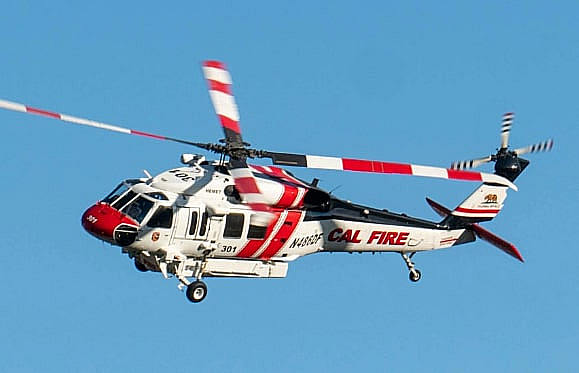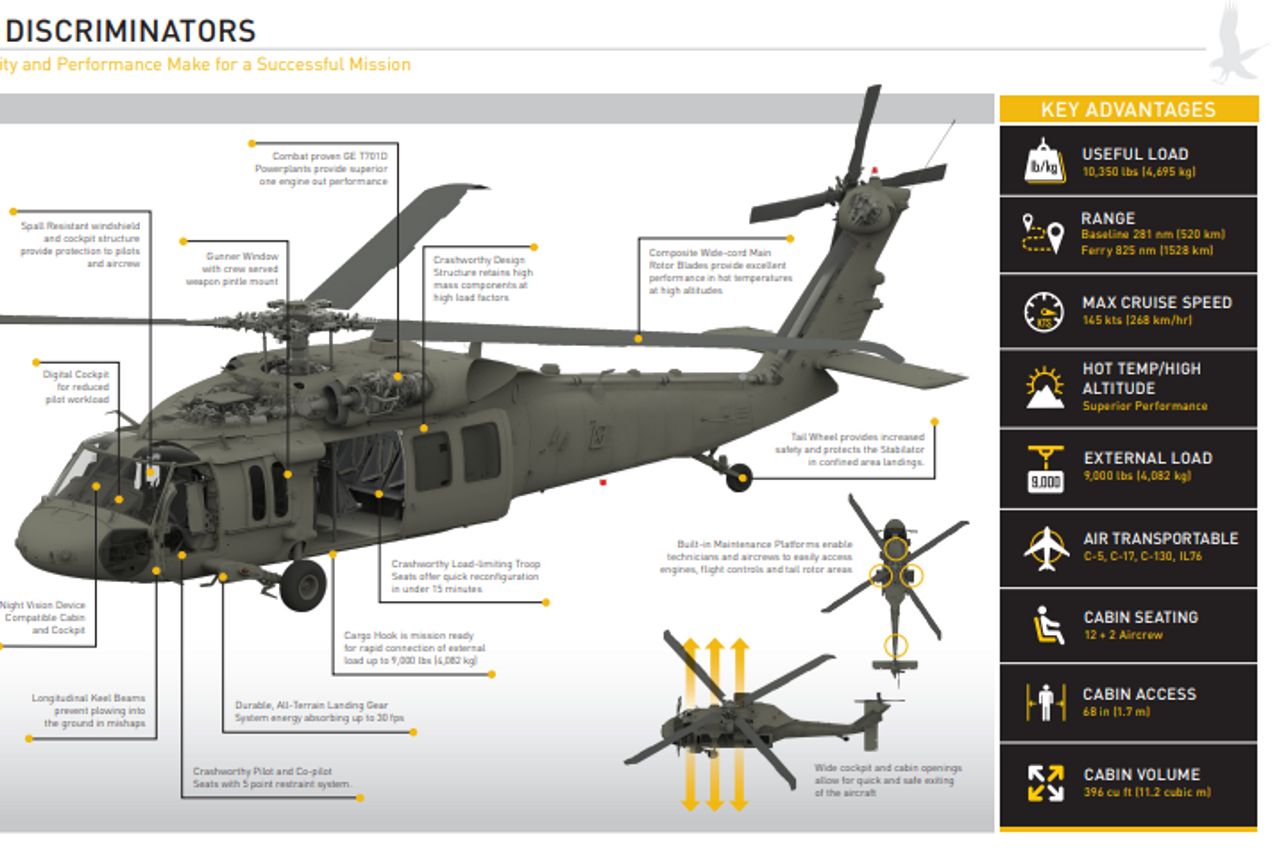Sikorsky S 70: Reinventing Tactical Procedures with Cutting-Edge Modern Technology
Sikorsky S 70: Reinventing Tactical Procedures with Cutting-Edge Modern Technology
Blog Article
High-Performance Multi-Role Rotorcraft Featuring Advanced Cabin Technologies and Integrated Sensing Unit Solutions
The world of rotorcraft innovation has actually seen remarkable improvements in recent times, especially in the world of high-performance multi-role rotorcraft furnished with advanced cabin technologies and flawlessly incorporated sensor systems. In the complying with conversation, we will explore the development of rotorcraft modern technology, dig right into the realm of innovative cockpit developments, and examine the effects of integrated sensor systems on the functional versatility and effectiveness of modern-day rotorcraft.
Development of Rotorcraft Innovation
The development of rotorcraft technology has been noted by significant developments in aerodynamics, materials, and propulsion systems, shaping the capabilities and performance of contemporary rotorcraft. Aerodynamic enhancements have improved the performance and maneuverability of rotorcraft, permitting boosted rate, agility, and security throughout flight (sikorsky s 70). Technologies in products, such as using composite materials and progressed alloys, have actually led to lighter yet stronger rotorcraft frameworks, boosting total efficiency and sturdiness. Additionally, advancements in propulsion systems, consisting of a lot more powerful engines and ingenious propulsion technologies, have actually made it possible for rotorcraft to attain higher altitudes, faster speeds, and higher payloads.
These innovations have not only changed the abilities of rotorcraft but have actually also broadened their applications throughout numerous sectors, including military, industrial, and emergency situation services. The continual advancement of rotorcraft technology proceeds to drive development in the area, pressing the boundaries of what is possible and forming the future of upright flight.
Advanced Cabin Innovations
Structure upon the fundamental developments in the rules of aerodynamics, products, and propulsion systems, the realm of rotorcraft technology currently changes focus towards introducing Advanced Cockpit Innovations. The assimilation of sophisticated modern technologies within the cabin setting plays an important role in boosting the functional capacities, safety and security, and efficiency of modern rotorcraft. sikorsky s 70. Advanced Cabin Innovations encompass a large array of functions developed to supply pilots with enhanced situational understanding, structured data monitoring, and intuitive control interfaces
One of the essential innovations in cockpit layout is the execution of glass cockpits, which change standard analog assesses with high-resolution display screens. These electronic systems provide adjustable layouts, real-time information assimilation, and enhanced readability, enabling pilots to access important information at a look. Advanced avionics systems, such as fly-by-wire controls and enhanced truth display screens, are transforming how pilots communicate with the aircraft, permitting for specific control and enhanced decision-making capacities.


Integrating advanced cabin developments not just improves pilot performance but additionally adds to general mission performance and safety in complicated functional atmospheres. By leveraging modern technologies within the cockpit, rotorcraft producers are establishing new criteria for operational excellence and mission success.
Integrated Sensor Systems
With the development of rotorcraft innovation, the assimilation of sophisticated Integrated Sensing unit Systems has actually come to be extremely important in improving functional effectiveness and safety and security. These Integrated Sensing unit Systems encompass a vast range of technologies that provide vital information for different features such as navigating, monitoring, targeting, and environmental surveillance. By perfectly incorporating sensors like radars, video cameras, lidar, and infrared systems into rotorcraft, operators can profit from improved situational recognition, improved objective capabilities, and reduced pilot workload.
One secret advantage of Integrated Sensor read this post here Equipments is their capacity to gather real-time data and supply actionable insights to pilots and mission drivers. For instance, advanced radar systems can identify and track targets over fars away, permitting early risk discovery and efficient feedback planning. Furthermore, integrating electro-optical and infrared electronic cameras makes it possible for rotorcraft to perform reconnaissance and monitoring goals with precision and precision.
Essentially, the assimilation of cutting-edge sensor technologies into rotorcraft not only boosts operational efficiency yet likewise adds considerably to overall mission success and team security. As rotorcraft remain to evolve, the duty of Integrated Sensing unit Equipment will undoubtedly stay at the center of advancement in the aerospace market.
Operational Adaptability and Effectiveness
Enhancing functional convenience and efficiency in rotorcraft is a natural progression from the integration of sophisticated Integrated Sensing unit Systems. By leveraging the understandings and information provided by these cutting-edge sensor systems, rotorcraft can enhance their efficiency throughout various goals and atmospheres.
Functional convenience includes the capability of rotorcraft to adapt to different functions and scenarios successfully. With advanced cabin technologies and incorporated sensor systems, rotorcraft can flawlessly shift between tasks such as search and rescue, clinical evacuation, monitoring, and much more. This flexibility boosts the rotorcraft's ability to fulfill varied operational requirements without needing substantial reconfiguration.
Performance in rotorcraft operations is vital for making best use of goal efficiency and source usage. Integrated sensing unit systems play a crucial function in boosting operational effectiveness by supplying real-time data on climate condition, terrain mapping, target monitoring, and extra. This data allows pilots to make informed decisions quickly, maximize trip paths, save gas, and improve overall objective performance.
Effect On Modern Air Travel Procedures

Moreover, the assimilation of advanced sensing units facilitates enhanced goal planning and implementation, enabling rotorcraft to do a wide array of tasks with boosted precision. From search and rescue procedures to airborne firefighting and police missions, the abilities of modern-day rotorcraft outfitted with sophisticated cabin technologies and incorporated sensing unit systems are exceptional.
Moreover, the effect of these advancements prolongs beyond functional efficiency to cost-effectiveness and sustainability. By maximizing trip routes, gas usage, and upkeep schedules, high-performance rotorcraft Going Here outfitted with advanced cockpit modern technologies and sensors contribute to decreasing functional expenses and environmental effect, making them indispensable properties in modern-day aviation operations.
Final Thought
Finally, the high-performance multi-role rotorcraft with sophisticated cabin modern technologies and incorporated sensing unit systems stands for a significant evolution in aeronautics modern technology. These technologies boost operational versatility and performance, eventually affecting modern-day air travel operations in a positive way. The combination of these advanced innovations enables enhanced capacities and efficiency in different objective circumstances, showcasing the proceeded improvement of rotorcraft modern technology in the aviation market.
The world of rotorcraft innovation has actually seen noteworthy developments in recent times, especially in the world of high-performance multi-role rotorcraft geared up with sophisticated cockpit modern technologies and flawlessly incorporated sensing unit systems. From improved mission versatility to boosted functional efficiency, the merging of innovative cabin modern technologies and incorporated sensor systems has actually ushered in a new age of possibilities for rotorcraft applications. In the adhering to conversation, we will discover the advancement of rotorcraft innovation, delve right into the world of advanced cabin technologies, and take a look at the implications of integrated sensor systems on the functional adaptability and effectiveness of modern rotorcraft.

Report this page